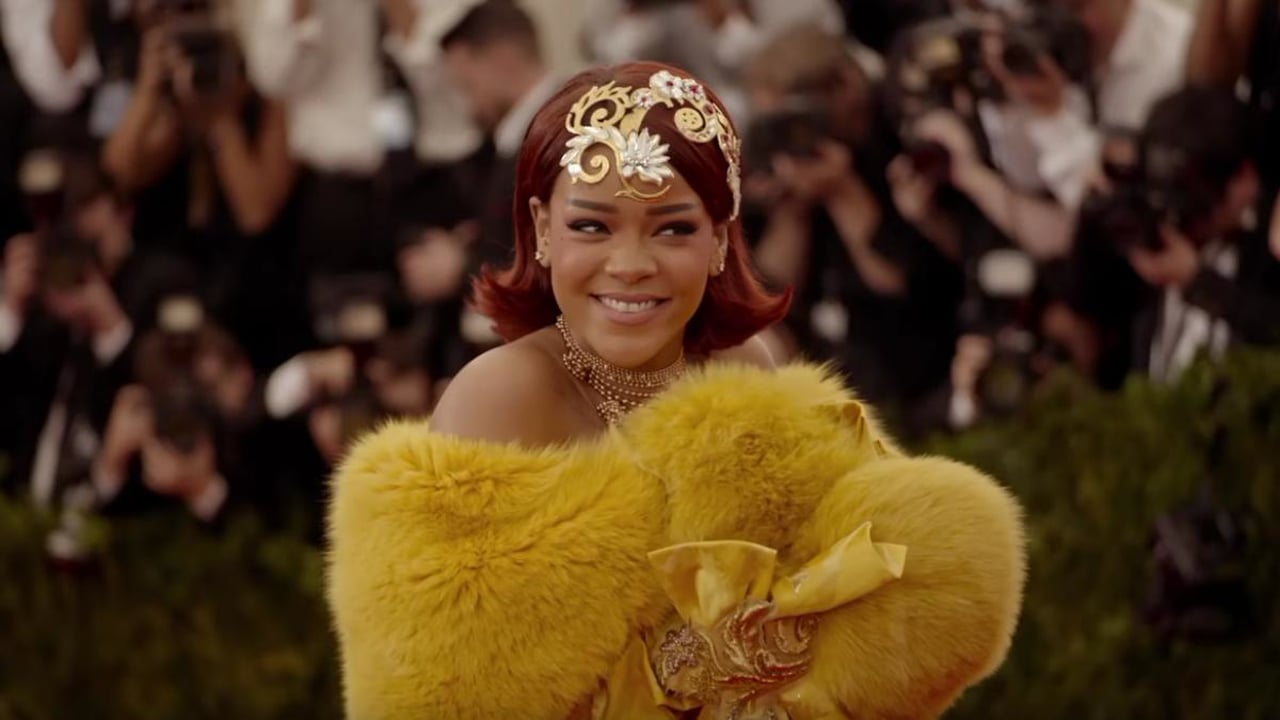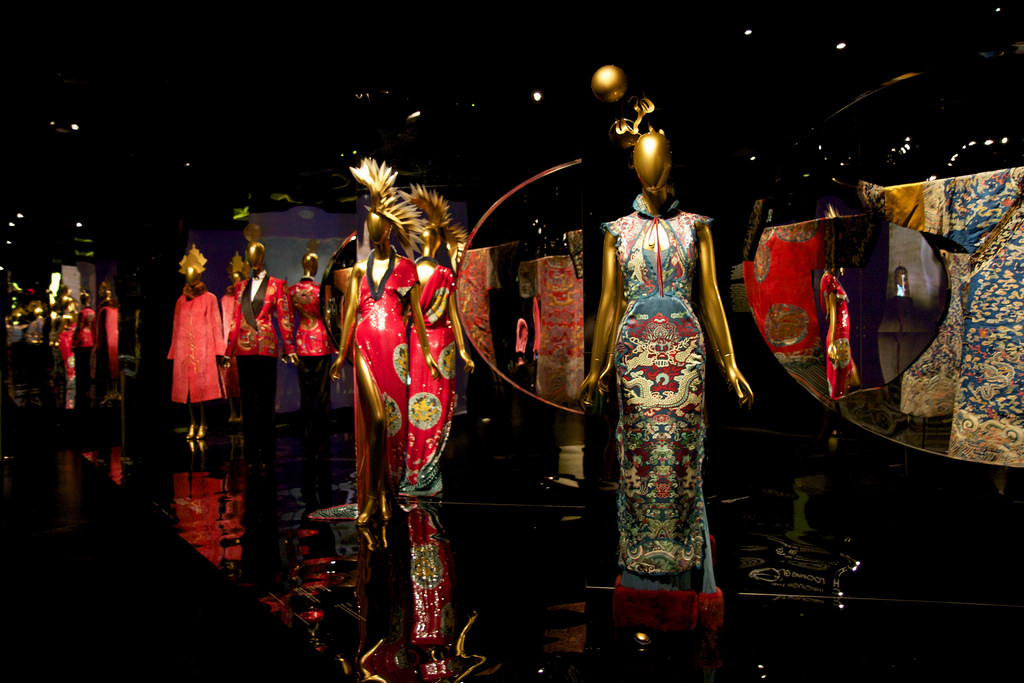Museums in Europe and North America have a long history of misrepresenting the "Other." Arguably, this issue stretches back to the founding of public museums in the late 17th century as institutions dedicated to displaying objects acquired through colonialism. Objects collected from different cultures, kingdoms, tribes, and countries were kept as specimens to study or as evidence of the lack of civilization found in the colonies with little understanding of or respect for their original meaning or intended use. This cultural theft continues into the present, manifesting itself in new ways and in new contexts, including fashion and media. As dialogue surrounding race, ethnicity, culture, and appropriation are becoming more commonplace, museums are also becoming more aware of the multiplicity of voices in the communities they serve and of stories that can be told by the objects held in their collections. They have begun to recognize the need to present diverse narratives to the public and to involve the public in creating these narratives, rather than perpetuating prejudices. As Museums are the product of the people who work there, it is inevitable that the race, class, gender, and identity of these individuals are reflected in the institution, therefore representation in the decision making process is imperative.i A good example of this is African Voices, the reinstallation of African gallery at the Smithsonian National Museum of Natural History in 1999. The Smithsonian maintained active communication with their community throughout the design, and installation process of the exhibition.ii Through several rounds of interviews, the exhibition adapted to serve it's audience more intimately.iii Through audience testing they were able to pinpoint where the misconception of Africa was, one being that paper money was used in Africa. Theses interview also contributed to the editing of the exhibition content, from images, to text shown, making sure that it wouldn't be misinterpreted as offensive.iv The final product focused on the voices real people of Africa, and the Diaspora, giving them the agency in self-representation.v
By exploring how museums have tried to navigate their representation of non-western culture, the ways in which they have (or have not) collaborated with local communities, we can better understand the how we can have a educational cultural dialogue, which embraces the multi-culturalism, rather than perpetuating the traditional Western point of view. I have chosen two case studies to explore this topic: the 2015 Metropolitan Museum of Art (Met) exhibition China Through the Looking-glass, and Kara Walker's 2007 exhibition My Complement, My Enemy, My Oppressor, My Love, which was exhibited widely in the United States and abroad.
Every year the Met hosts a gala to accompany the opening of the Costume Institute's spring exhibition dedicated to fashion Also known as the Met Ball or the Met Gala, the event is the museum's main fundraising effort in support of the Institute.vi Anna Wintour, Trustee of the Costume Institute, Artistic Director of Condé Nast and Editor-in-Chief of Vogue, co-hosts the Gala each year. The Gala's theme changes annually, depending on the exhibition it accompanies. In the spring of 2015, the exhibition was curated by Andrew Bolton, curator of the Costume Institute, and entitled China Through the Looking-glass.vii It was meant to explore the visual and cultural relationship between China and the West through the language of fashion. Bolton chose to display contemporary haute-couture fashion alongside the Chinese objects and films that inspired them.viii For example, an emperor's dragon robe from Beijing's Forbidden City, was paired with a Tom Ford for Yves Saint Laurent's yellow dress that "borrows" the robe's iconography. The show explored various times periods including Imperial China, the Republic of China, and the People's Republic of China, all in relation to contemporary fashion.
The exhibition was criticized by users on Sina Weibo, a Chinese social media platform, for misrepresenting Chinese art, aesthetics, culture and history, particularly as the objects Bolton chose to display were not seen as accurate reflections of contemporary Chinese culture.xi This misrepresentation can be considered as a reflection of the curator's identity, since it is inevitable for the "product" to reflect it's maker, and Bolton is not Chinese.xii Bolton insisted that he was not representing China, but the dialogue between the West and China.xiii He argued that questioning the authenticity of the West limits the creative possibility claiming that: "When you posit the East is authentic, and the West is unreal, there's no dialogue to be had."xiv Thus the show argues for the acceptance of the West's fantasy of China as a culture of its' own distinct from that of China, and used by both Chinese, and Western fashion designers.xv

'My Complement, My Enemy, My Oppressor, My Love' Exhibit 
Yellow Dress
Even before it opened the show's original title Chinese Whispers generated controversy.ix What drew the most criticism, however, were the outfits worn on the red carpet the night of the Gala. Thanks to the Internet and our digital age, people from around in world were able to view, then share, images that poked fun at the outrageous Chinese-style outfits and accessories worn by celebrities, few of whom were Chinese. An image of co-host, Sarah Jessica Parker's headpiece was compared to images of Fuwa, one of the five mascots for the 2008 Beijing Olympic Games.x Criticism of the fashion industry's perpetual appropriation of Chinese images and motif were far less comical, particularly once the museum, as a renowned cultural institution, entered the dialogue.

'China Through the Looking-glass' Exhibit
Bolton collaborated with Wong Kar-wai, a renowned Hong Kong director who served as the exhibition's Artistic Director, and with the Met's Asian Art Department. Their voices were, however, clearly secondary to Bolton's vision. Maxwell Hearn, Director of the Asian Art Department, noted problems with the exhibition before it opened in May. He commented, "I think bringing Western Fashion into the Chinese galleries can be perceived as a misinterpretation of who the Chinese are, what Chinese culture is about."xvi The First Monday in May, a documentary about the exhibition clearly revealed the friction between Hearn and Bolton. Hearn's main concerns were that the exhibition would be too theatrical, like "Disneyland" causing "hype" that would overshadow the "intellectual content."xvii
China Through the Looking-Glass show had an opportunity to assert meaning and give value to the culture and history appropriated in the fashions created by Western designers. Instead, it not only accepted, but also glorified the fashion industry's tradition of cultural appropriation. Bolton's claim that the show explored an imagination of China ignored the social and political suffering, and the history and culture of the people of China. In this light, his narrative mimicked that of colonialism, and the fact that money plays a large part in the in the Costume Institute interests further emphasizes this.

'China Through the Looking-glass' Exhibit